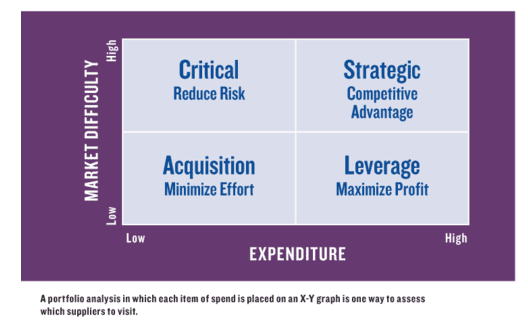From SCDigest's On-Target e-Magazine
- March 5, 2013 -
Supply Chain News: Even in Tough Economic Climate, Skipping Supplier Visits is a Mistake, Procurement Expert Says
With Good Preparation, Return from Time and Travel Should be High; Getting "Unfiltered" Information; Use of Checklists is Key
SDigest Editorial Staff
Most procurement managers understand the importance of supplier visits, but finding the time and maintaining the discipline to keep the process going consistently can certainly be a challenge.
Writing in a recent issue of Inside Supply Management, Linda Michels, vice president of corporate learning systems for ADR North America, an arm of the Institute for Supply Management, also notes that lean staffing and limited travel budgets are also barriers to getting regular visits done. (Michels, we will note, maintains the "SourcingChick" twitter feed.
SCDigest Says: |
 |
When it comes to the visit itself, Michels makes the good point that in developing a timed agenda for the meeting, procurement managers often fail to sufficiently account for meeting overhead and formalities
|
|
What Do You Say?
|
|
|
|
But when you get right down to it, such visits should not really be considered optional for some suppliers, Michels says.
"When carefully planned and executed, supplier visits create opportunities to collect valuable information - and information is power," Michels writes.
Of course, key to the technique is to understand which suppliers require visits, and how often to go. Michels suggests a simple four-box approach, in which the X-axis measures total spend levels with a vendor (high or low), and the Y-axis the difficulty of sourcing the material, part or service. That difficulty can be caused by a company's own specifications, a vendor having proprietary products, a limited vendor pool, etc.
Suppliers can then be placed into the resulting matrix in one of four main categories, which she names as follows: acquisition, critical, strategic and leverage (see graphic below).
Logically, the approach to site visits and what the goals should be will vary according to what quadrant a supplier is placed.
Michels says suppliers in the "acquisition" category rarely require visits. Those in the "leverage" quadrant should be occasionally visited with the goal of better understanding the supplier's cost structure and assessing the efficiency, quality and reliability of the company.
"Critical" supplier visits should focus on strategies for better mitigating risks, while visits to "strategic" supplier will have the broadest scope (risk, collaboration opportunities, innovation, etc.).
Rating Suppliers for Site Visit Priorities

Source: Linda Michels/Inside Supply Management
Much of the value of supplier visits comes from the ability to obtain "unfiltered" information, Michels says, versus the information that may be coming from the supplier's account manager or corporate communications vehicles.
But like most things in business, to realize and maximize the value of the visit, excellent preparation is key. Perhaps the most critical step is to collaborate with stakeholders internally about what specific information would be valuable, whether that is related to costs, industry trends, risk strategies, the supplier's R&D plans, and more. It is often beneficial to bring along a technical expert to assist in the process, if the budget can allow for more than one person on the trip.
When it comes to the visit itself, Michels makes the good point that in developing a timed agenda for the meeting, procurement managers often fail to sufficiently account for meeting overhead and formalities, and thus run out of time to cover all the intended topics. Be realistic about how long a lunch break is really going to take, as an easy example.
(Sourcing and Procurement Article Continues Below)
|
Michels also says that using forms and checklists can also help the procurement manager to stay focused and better ensure that all the desired information and insight is obtained. She also suggests sending those forms to the supplier in advance so that it can be prepared to have the information available.
Michels also says that it is important to clearly set the stage for the next steps as an outcome of the visit.
"Before wrapping up the visit, you should obtain agreement on the key initiatives and joint programs both organizations plan to work on in the coming months, along with a time line for completion of these projects," she writes. "Decide on the process and the key team members who will participate in the collaboration."
From SCDigest's view, these "next steps," and follow up and quantification of the resulting business benefits, should in many if not most cases provide the cost justification for continuing the supplier visit program, in addition to the more qualitative benefits obtained in terms of relationship building, knowledge enhancement, etc.
"In tough economic times, suppliers sometimes cut corners and bypass key processes. By auditing key suppliers, supply management professionals can be assured that supplier expectations are being met," Michels concludes. "It is also a great opportunity to collect data for a cost analysis and to work closely on areas that may provide true cost savings, not just supplier margin reductions."
Do you do regular supplier visits? What would you add to Michels thoughts? Let us know your thoughts at the Feedback button (email) or section (web form) below.

|